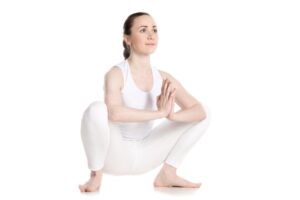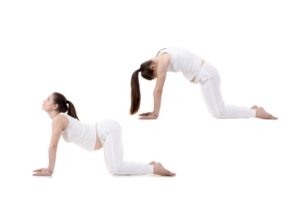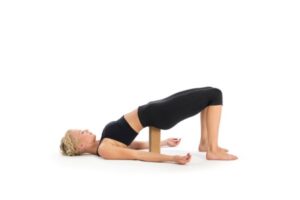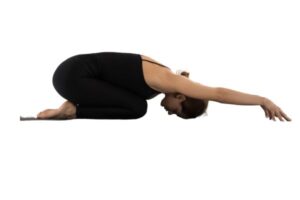Pregnancy is a beautiful journey, but it also brings significant changes to the body—especially to the pelvic floor muscles. These muscles provide crucial support to the uterus, bladder, and bowel, playing a vital role in stability, posture, and childbirth. As your baby grows, the increased pressure on the pelvic floor can lead to discomfort, weakness, and even issues like incontinence or back pain.
One of the most effective ways to maintain a strong and healthy pelvic floor during pregnancy is through prenatal yoga. Yoga helps strengthen, stretch, and relax the pelvic muscles, preparing your body for labor while reducing common pregnancy discomforts. Prenatal yoga poses that can support your pelvic floor health, promote better posture, and enhance overall well-being throughout pregnancy.
What is the Pelvic Floor?
The pelvic floor is a group of muscles, ligaments, and tissues that form a supportive hammock at the base of your pelvis. These muscles play a crucial role in supporting the bladder, uterus, and bowels, ensuring proper function and stability. During pregnancy, the added weight of the growing baby and hormonal changes can put extra pressure on these muscles, sometimes leading to weakness, discomfort, or even incontinence.
A strong and flexible pelvic floor is essential for a smoother pregnancy, reduced risk of complications during labor, and faster postpartum recovery. One of the most effective ways to support your pelvic floor health is through prenatal yoga, which helps in both strengthening and relaxing these muscles for optimal function.
Why Prenatal Yoga is Essential for Pelvic Floor Health?
Prenatal yoga comes in as an effective, holistic approach to maintaining balance between strength and flexibility. Yoga poses that engage, stretch, and relax the pelvic floor can help improve muscle tone, support better posture, and prepare the body for labor. Deep breathing techniques in yoga also encourage proper oxygen flow, reducing stress and helping expectant mothers connect with their bodies.
Yoga promotes both engagement and relaxation of the pelvic floor, ensuring that these muscles function properly. A strong but flexible pelvic floor can make delivery easier and aid in faster postpartum recovery. Additionally, prenatal yoga offers mental and emotional benefits, reducing anxiety, promoting relaxation, and fostering a deeper connection with the baby.
By practicing specific prenatal yoga poses, expecting mothers can ensure that their pelvic floor remains resilient and well-prepared for childbirth, leading to a more comfortable pregnancy and smoother postpartum healing.
5 Prenatal Yoga Poses for Pelvic Floor
Malasana (Garland Pose – Deep Squat)

This deep squat opens the hips, strengthens the pelvic floor, and improves flexibility in the lower body. It helps prepare for labor by increasing pelvic mobility and encouraging relaxation.
Benefits:
- Stretches and strengthens the pelvic floor muscles.
- Opens the hips, preparing the body for labor.
- Encourages deep breathing, which helps in relaxation.
How to Do It:
- Stand with your feet wider than hip-width apart and turn your toes slightly outward.
- Slowly lower into a deep squat, keeping your spine straight.
- Press your palms together in front of your chest and use your elbows to gently push your knees outward.
- Hold for 5-8 breaths, ensuring that your pelvic floor is engaged but not overly tensed.
Modification: If you feel strain, sit on a yoga block for support.
Supta Baddha Konasana (Reclining Bound Angle Pose)

A restorative pose that enhances blood circulation to the pelvic region, gently stretches the inner thighs, and promotes relaxation of the pelvic floor muscles, reducing tension and discomfort.
Benefits:
- Encourages relaxation of the pelvic floor.
- Enhances blood circulation to the pelvic region.
- Reduces lower back and hip discomfort.
How to Do It:
- Lie down on your back with your knees bent.
- Bring the soles of your feet together, allowing your knees to fall open.
- Place pillows under your knees for support if needed.
- Focus on deep belly breathing, relaxing the pelvic muscles as you exhale.
- Hold for 1-2 minutes.
Modification: If lying flat is uncomfortable, elevate your upper body with a bolster or pillow.
Cat-Cow Pose (Marjaryasana-Bitilasana)

A gentle flow between arcing and rounding the back that improves spinal flexibility, engages the pelvic floor, and encourages better posture while relieving lower back tension.
Benefits:
- Strengthens the pelvic floor and core muscles.
- Improves flexibility in the spine and hips.
- Encourages gentle movement of the pelvis, reducing tension.
How to Do It:
- Get into a tabletop position with your hands under your shoulders and knees under your hips.
- Inhale, arch your back (Cow Pose), and lift your tailbone while looking up.
- Exhale, round your spine (Cat Pose), and tuck your chin to your chest.
- Repeat for 8-10 slow breaths, syncing movement with breath.
Modification: Place a folded blanket under your knees for extra support.
Bridge Pose (Setu Bandhasana)

Strengthens the glutes, lower back, and pelvic floor muscles while improving core stability. This pose also promotes controlled engagement of the pelvic floor for better support.
Benefits:
- Strengthens the glutes, lower back, and pelvic floor.
- Encourages controlled pelvic floor engagement.
- Supports better posture and spinal alignment.
How to Do It:
- Lie on your back with knees bent and feet hip-width apart.
- Inhale, press through your feet, and lift your hips toward the ceiling.
- Engage your pelvic floor muscles while holding the pose for 5-10 seconds.
- Exhale, slowly lower your hips back down.
- Repeat 5-7 times.
Modification: Place a yoga block under your sacrum for a more restorative version.
Child’s Pose (Balasana)

A deeply relaxing pose that helps release tension in the pelvic floor, lower back, and hips. It encourages deep breathing, which aids in stress relief and overall muscle relaxation.
Benefits:
- Relaxes the pelvic floor muscles.
- Reduces lower back tension.
- Encourages deep diaphragmatic breathing.
How to Do It:
- Kneel on the mat with your big toes touching and knees wide apart.
- Lower your torso forward, extending your arms out in front of you.
- Rest your forehead on the mat and take deep, calming breaths.
- Hold for 30-60 seconds.
Modification: Use a pillow under your belly if needed for extra support.
Final Thoughts : Prenatal Yoga Poses to Strengthen and Relax Your Pelvic Floor
Maintaining a strong and flexible pelvic floor is essential for a healthy pregnancy, smoother labor, and faster postpartum recovery. Practicing these prenatal yoga poses regularly can help expectant mothers build the strength needed to support the growing baby while also ensuring relaxation and flexibility for childbirth.
Join us at Body and Mind Yoga Center, where our specialized prenatal yoga classes in Dubai provide a nurturing environment for mothers-to-be to connect with their bodies and their growing babies.


